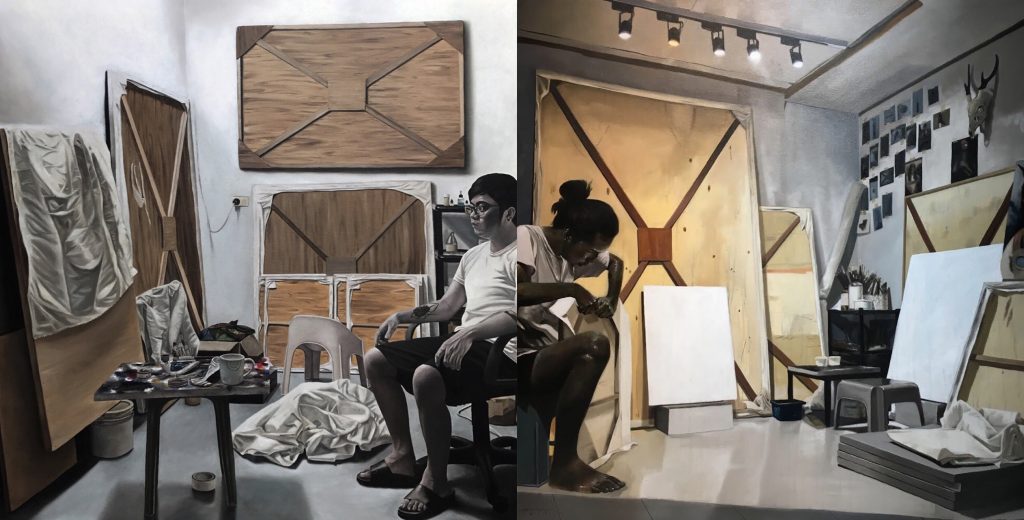CONNECTING GAPS
Kiko Urquiola | Gian Miroe
August 13 - August 24, 2017

Connecting Gaps
In the study of human consciousness, a certain Edward Hall, a cultural anthropologist, theorized that individuals use space in interpersonal communication according to the degree of closeness in a relationship. This means to say that the measure of distance that a person utilizes to interact with another indicates the kind of relationship that he has with another being. Ideally, the closer or farther away a person stands from an individual tells if the other is family, friend, acquaintance or stranger. Thus, the conscious act of closing a physical gap may be motivated by one’s trust, interest and knowledge of the other person. With this, the act of closing or connecting the gap maybe the same as saying “I know you, let’s share a moment together”.
In Connecting Gaps, two up-and-coming visual artists, Gian Miroe Surban and Kiko Urquiola share a moment together after a hiatus of separation. In this exhibition, the two close miles of distance meant for strangers, to enter a personal space reserved for close friends. In this case, the exhibition becomes a fateful reunion of two friends, and an opportunity for both to catch up, with stories painted as images on canvas. Each of their images reveal the everyday lives that each of them now walk, straight out of their individual studios (Gian is in Pasay, while Kiko is in Bulacan). Hence, viewers will see sneak peeks of both artists in their “creative refuge”, right smack in the middle of their creative process.
Gian starts the conversation with realistic paintings of his studio and dark-skinned characters that emphasizes contrast, or a sense of divide. This appears in Boundaries, where two different arms in close proximity connote a relationship seemingly separated by an invisible line. Another work is Divide, a zoomed-in image of the artist’s brother sawing a crevice in the middle of plywood for the canvas. Meanwhile, Colors reveal the tools of his trade, with each of the materials neatly divided according to their use.
Kiko, on the other hand, responds with a series of realistic paintings that intrigue with surreal juxtaposition and highlight connections and relativity. For instance, in the series Permanence 1 – 4, viewers will see four tableaux of objects that connote four aspects of his art making – carpentry, stretching and priming canvas and finally, painting. He throws in the surreal in Impermanence 1-4 where he paints behind-the-scenes” moments during his free time, like watching TV, feeding his dog, and tinkering his mobile phone.
While their individual canvases remind of the void that now keeps them apart, the piece Connecting Gaps a diptych showing the artists in their studios, best represents the newfound connection that both achieved in this exhibition. In the work, it is interesting to note that although both of them are in two different locations, it is as if they are in the same place. In here, with their backs against each other, they are reunited in a place where they can pursue the passion for painting. In here they are able to connect the gap that once kept them apart.
—Lorraine Datuin